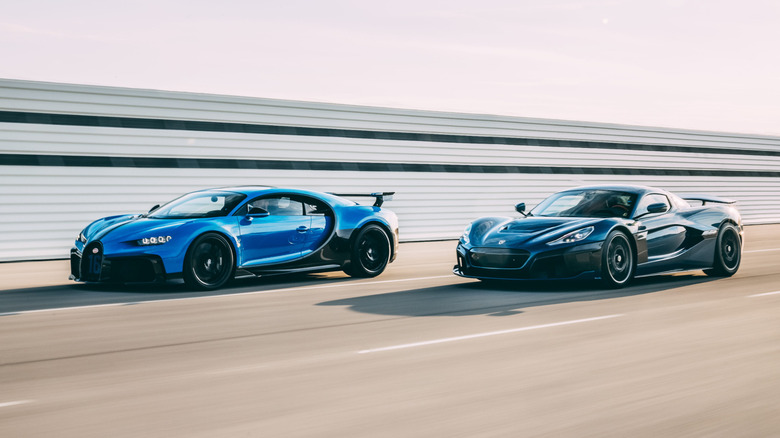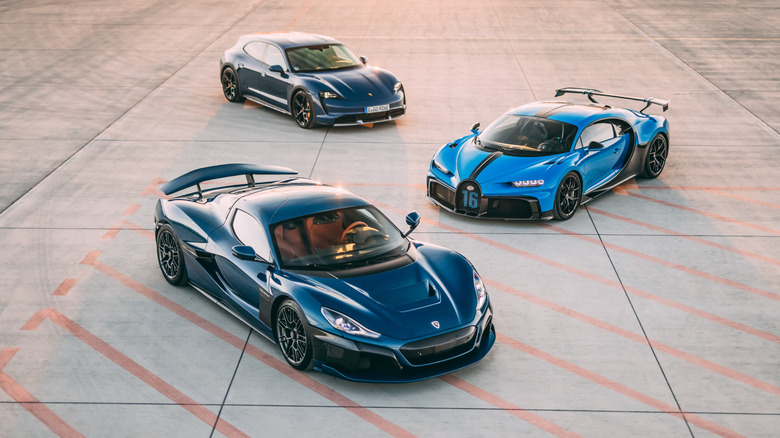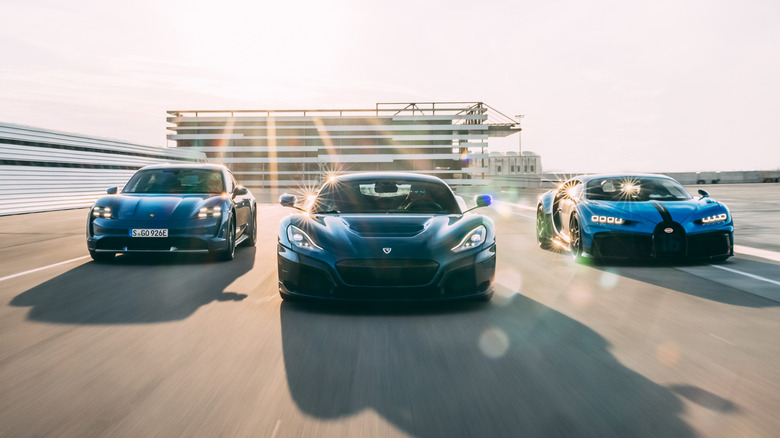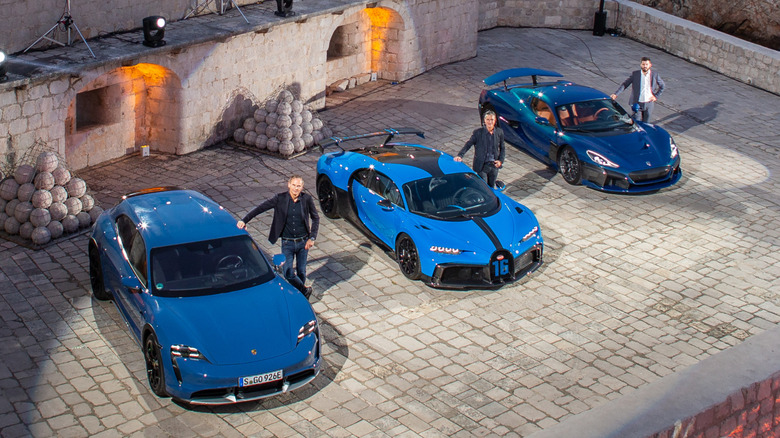The Reason Why Volkswagen Sold Bugatti Explained
Bugatti, the maker of obscenely expensive and hellishly fast supercars, made an exit from the house of Volkswagen in July of 2021. The move was a sign that the German automaker was no longer interested in the uber-luxury hypercar cookie and wanted to play in its safe stomping grounds for the foreseeable future. It was also the time when all big players were either pondering their future in the electric car segment or were busy making safe electrification bets at the cusp of a global semiconductor crunch and supply war over battery resources.
But Bugatti didn't fall too far off from Volkswagen's lawn. The brand, which takes special pride in owning speed and sticker price record, was lapped up by a consortium. This joint entity consisted of fellow hypercar maker Rimac and Volkswagen-owned supercar giant Porsche. It was a match made in heaven, assuming no ugly politics were going on behind the scenes.
Rimac is no stranger to pushing the limits of automobile tech with tastefully designed vehicles that cruise around with the sole intention of breaking a few speed and acceleration records. Just like the Bugattis out there, Rimac rides also cost a pretty penny. Moreover, Porsche — still operating under the banner of Volkswagen AG — also owned a stake in Rimac when the deal was signed. You might find it surprising that Volkswagen acquired Bugatti in 1998, long before it brought Porsche under its wings.
The official explanation
The formation of a joint Bugatti Rimac group sent shockwaves in the automobile industry for multiple reasons. Following the asset transfer, Rimac became a major shareholder in the joint entity with a 55% stake, while Porsche and Hyundai got 24% and 12% of the pie, respectively. Rimac founder Mate Rimac took the mantle of leadership but promised that both brands would continue with its separate identities.
However, the writing had been on the wall for a while. Despite selling cars that cost millions of dollars, Bugatti continued to bleed loads of money, with the Chiron being the latest example. It also didn't help that Volkswagen started having electric car dreams and had already begun converting some of its engine development units into R&D havens for electric car batteries. The official press releases from Bugatti and Rimac were conspicuously silent on the "why" part of the deal and focused on boilerplate brand synergy and other corporate fluff.
But behind-the-scenes statements confirmed it was about saving money and prepping for an electric future. "It's the only way to develop Bugatti for a profitable future," Lutz Meschke, the chief financial officer of Porsche, was quoted as saying by The New York Times. Profitability has long been a chronic problem for Bugatti, which died halfway through the 20th century and was brought back to life by Volkswagen a few decades later.
Other background factors at play
The report also adds that Volkswagen wanted to shed the demons of its dieselgate scandal. Oliver Blume, the chief executive of Porsche, acknowledged that the deal removes a distraction for Volkswagen and allows the company to focus on more important tasks. Among those important objectives was shifting to production of electric vehicles, the report added. However, chatter about a potential Rimac and Bugatti joint venture surfaced a year earlier and was first reported by CAR magazine.
The outlet further noted that Volkswagen had decided to shift its focus from the specialty brands acquired under previous leadership. Moving ahead, the brand was in favor of distributing funds and efforts towards more fruitful investments in automotive advancements such as electrification, digital innovation, and self-driving technology.
Then, there is the crucial element of technology sharing. Rimac is no stranger to doing just that for some of the world's top brands, including Bugatti. In fact, following the Bugatti deal, Rimac promptly spun off its research and tech wing into a separate division to keep doing its job of hawking innovation.
Rimac certainly has an enviable pedigree of innovation. Just take a look at the Rimac Nevera, an absolute electric monster churning out 1,914 hp. With a top speed of 258 mph and clocking zero to 60 mph in just 1.74 seconds, the Nevera is at the vanguard of an automobile future where battery-powered hypercars will leave fossil-based rides far behind. Of course, Porsche will also benefit from that innovation, creating a win-win situation for Volkswagen.
What's next for Bugatti-Rimac?
Rimac already has its foot firmly set in the electric hypercar future, and from the looks of it, comfortably ahead of rivals such as the Karma Kaveya. But Bugatti's situation is a tad different. Right now, the only electric ride under the Bugatti label is a scooter. Moreover, plans for electrification are still deep into the future.
Bugatti's deputy design director, Frank Heyl, told ArsTechnica that an electric Bugatti will carry the iconic design of the brand's petrol-based cars, which means you can safely expect elements such as a pronounced nose. It would make little sense if Bugatti did otherwise. But when exactly an electric Bugatti can be seen revving up on a highway remains a mystery.
"Rimac's fast-paced operations and electrification skills are the perfect complement to Bugatti's exceptional heritage and craftsmanship. Stay tuned for some truly extraordinary projects in the future," Chief Rimac notes. On the other hand, Volkswagen has inked a deal to import and sell Bugatti cars in the U.S.
According to Bloomberg, the Bugatt-Rimac joint venture still sees a future where fossil-based Bugatti cars continue to hit dealerships, but an electric future is definitely on the horizon. "I think that we are developing the best possible solution for Bugatti, which is not an electric car today. It will be one day, but not today," Rimac told Automotive News Europe. Whenever that happens, the likes of Lamborghini, McLaren, and Ferrari will be waiting to steal the electric Bugatti's thunder.



